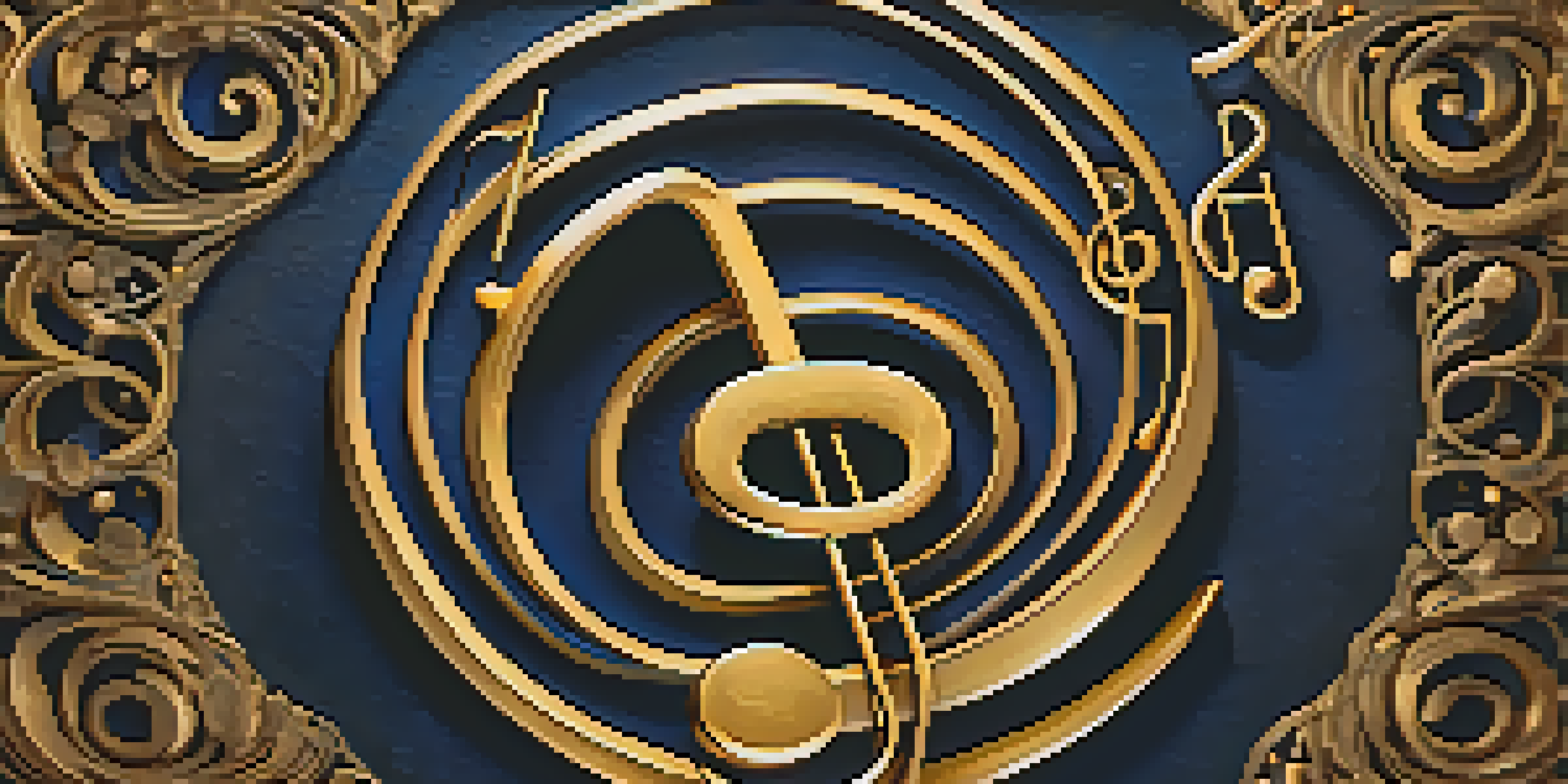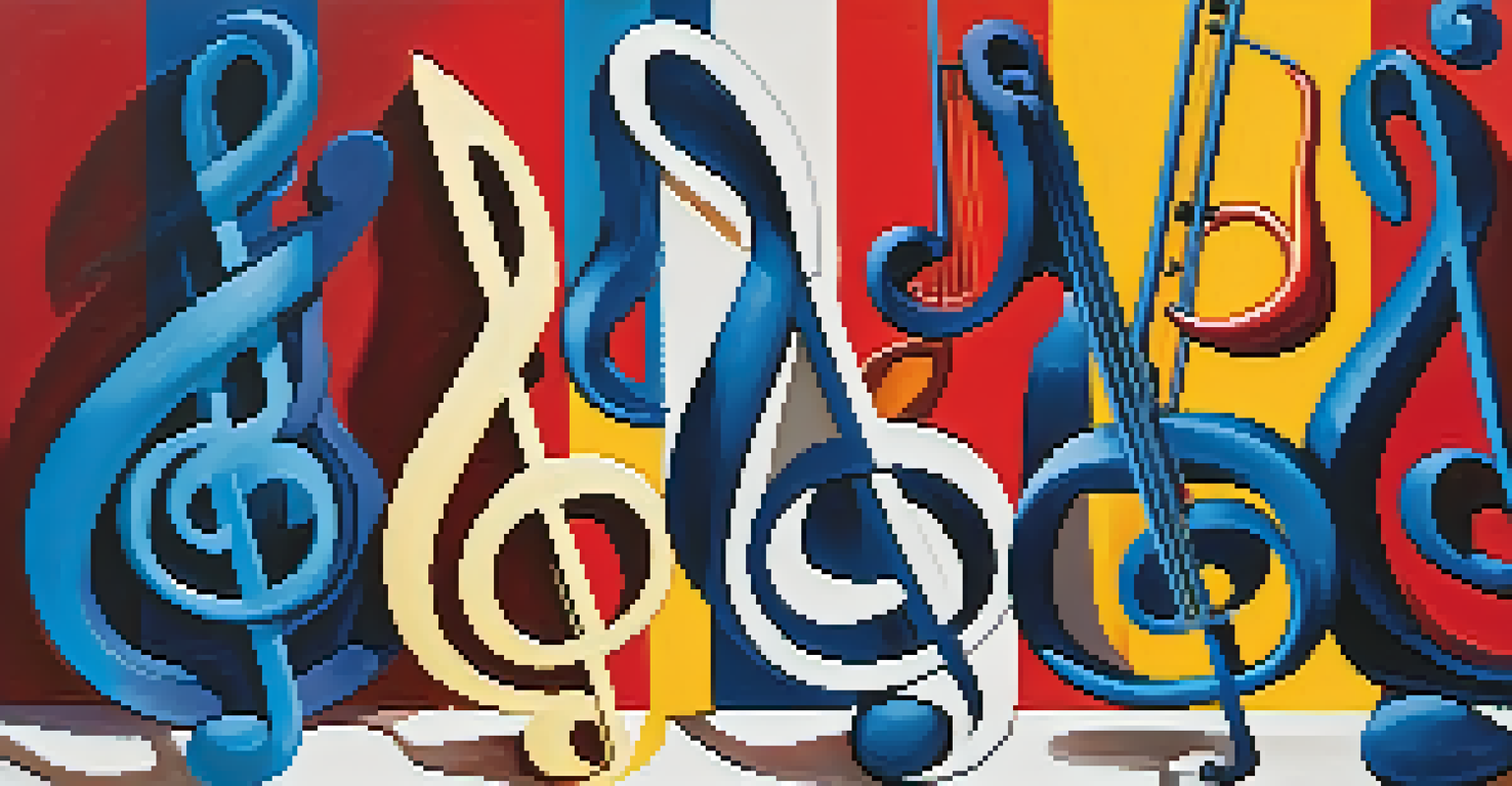Different Clefs in Music Notation: Treble, Bass, and More

What are Clefs and Why Are They Important?
Clefs are symbols placed at the beginning of the staff in music notation that indicate the pitch of the notes. They serve as a guide for musicians, helping them understand which notes correspond to which lines and spaces on the staff. Without clefs, reading music would be a challenging puzzle, even for seasoned players.
Music is the shorthand of emotion.
Think of a clef as a map for a musician. Just as a map helps you navigate your surroundings, a clef helps musicians navigate the musical landscape. It sets the stage for how high or low a note sits, allowing for a fluid performance regardless of instrument or voice type.
Each clef has its unique characteristics and applications, making them crucial for different musical contexts. Understanding these clefs empowers musicians to interpret and perform music accurately, which is the heart of any musical endeavor.
The Treble Clef: The Voice of Higher Notes
The treble clef, also known as the G clef, is commonly used for higher-pitched instruments like the flute, trumpet, and violin. This clef spirals around the second line of the staff, which represents the note G, hence the name. It's the go-to clef for most vocal music and many melodies.

When you see a treble clef, you can expect to encounter notes that sing and soar. This clef makes it easier for musicians to read higher notes without confusion. Imagine a bird gliding through the sky, effortlessly navigating the air; that’s the essence of the treble clef in music.
Clefs Guide Musical Navigation
Clefs are essential symbols in music notation that help musicians identify the pitch of notes, making reading music accessible.
For beginners, the treble clef can feel intuitive as it's often associated with familiar melodies. Many popular songs, especially those sung by the human voice, are notated in this clef, connecting learners to the music they love.
The Bass Clef: Anchoring Lower Notes
The bass clef, or F clef, is used for lower-pitched instruments such as the cello, bassoon, and tuba. It encircles the fourth line of the staff, which corresponds to the note F. This clef is essential for providing depth and richness to musical compositions.
Without music, life would be a mistake.
Think of the bass clef as the foundation of a musical building. Just as a sturdy foundation supports a structure, the bass clef supports harmonies and chords by anchoring lower notes. Without it, music would lack the depth and resonance that make it truly captivating.
For many musicians, transitioning to the bass clef can be a new adventure, especially if they are already familiar with the treble clef. Understanding both clefs opens up a world of musical possibilities, allowing performers to engage with a wider repertoire.
Alto Clef: The Unique Middle Ground
The alto clef, mainly used by the viola and some other instruments, is less common but equally important. It places the note middle C on the middle line of the staff, making it a unique bridge between treble and bass clefs. This clef is particularly useful for instruments that play in the middle range.
Imagine the alto clef as a friendly mediator between higher and lower notes. It allows violists to read music comfortably without having to constantly switch between treble and bass clefs. This makes it easier for them to focus on performance rather than grappling with notation.
Different Clefs for Unique Roles
Each clef, from treble to bass, serves specific instruments and vocal ranges, enriching the musical landscape and performance.
While the alto clef may be less familiar to many, it plays a crucial role in orchestration and chamber music. Understanding it can enhance a musician's versatility and deepen their appreciation for the various roles instruments play in a composition.
Tenor Clef: For the Higher Voice Instruments
The tenor clef is another less frequently encountered clef, primarily used by instruments like the bassoon, trombone, and some vocal music for tenor voices. It places middle C on the second line of the staff, allowing musicians to read higher notes more comfortably.
Think of the tenor clef as a specialized tool tailored for specific needs. Just as a chef has a variety of utensils to prepare different dishes, musicians use the tenor clef to navigate higher notes without the clutter of excessive ledger lines.
Learning to read the tenor clef can be a valuable skill for musicians looking to expand their repertoire. It opens doors to a wide range of music that requires a higher pitch and could introduce players to new pieces that they might not otherwise consider.
Other Clefs: Exploring the Lesser-Known Options
Beyond the common clefs mentioned, there are several other clefs like the mezzo-soprano clef and the baritone clef. These clefs serve specific musical purposes and cater to unique instruments or voice types, enhancing the versatility of music notation.
Consider these lesser-known clefs as specialty spices in a recipe. While they may not be used as frequently, they can add a distinctive flavor to compositions and are essential for certain performances. Musicians who understand these clefs can interpret a broader range of music.
Understanding Clefs Enhances Skills
Familiarity with various clefs not only improves a musician's versatility but also opens up new opportunities in their musical journey.
As music evolves, new clefs may emerge to accommodate different styles and instruments. Staying open to learning about these additional options can enrich a musician's toolkit and deepen their understanding of music as a whole.
How Clefs Affect Instrument Selection
The choice of clef often dictates which instruments are best suited for particular pieces. For instance, a piece written in treble clef will typically favor higher-pitched instruments, while bass clef pieces will resonate with lower-pitched instruments. Understanding this relationship can help musicians choose the right instrument for the music they want to play.
Imagine attending a concert where every instrument plays music in its native clef. The harmony and blend of sounds would create a rich tapestry of music, each clef contributing its unique voice. This interplay highlights the importance of clefs in orchestration and ensemble playing.

Musicians who are versatile in reading different clefs can easily switch between instruments or collaborate with others. This adaptability not only enhances their skills but also enriches their musical experiences and opportunities.
Conclusion: The Power of Clefs in Music Notation
In conclusion, clefs are fundamental to music notation, guiding musicians as they interpret and perform. Whether it’s the soaring notes of the treble clef or the grounding tones of the bass clef, each clef plays a vital role in the musical landscape. Understanding these symbols not only aids in reading music but also enhances the overall musical experience.
As you delve deeper into the world of music, embrace the different clefs and their unique qualities. Each clef offers a distinct perspective on musical notation, providing you with the tools to explore and express your creativity.
Ultimately, the knowledge of clefs enriches your journey as a musician, allowing you to connect with a diverse range of music. So, whether you’re strumming a guitar, playing a piano, or singing, remember the power of clefs and the stories they tell.